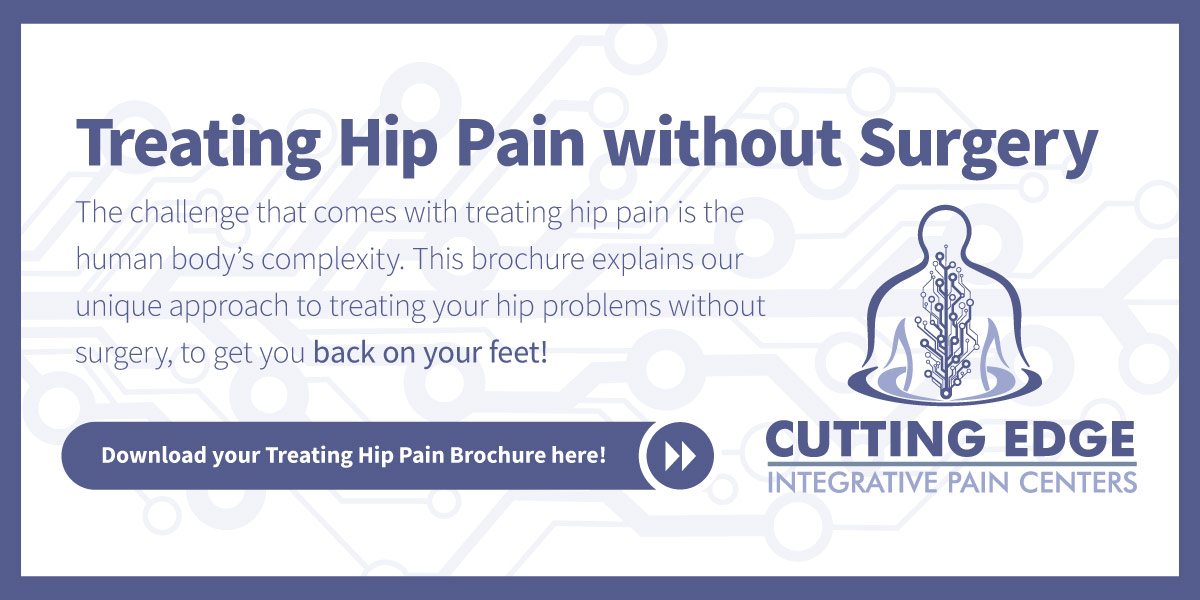If you are experiencing low back pain caused by a herniated disc, an endoscopic discectomy may be the answer you were looking for. While the name of the procedure may seem frightening, it is actually among the least-invasive procedures that Cutting Edge Integrative Pain Center offers. Compared to traditional surgeries, minimally invasive surgeries such as endoscopic discectomy offer numerous benefits. In this week’s blog, we will discuss the endoscopic discectomy procedure, as well as the benefits it holds in store for patients.
Learn the Benefits of Geniculate Artery Embolization
Endoscopic Discectomy Procedure Explained
Endoscopic discectomy is a common type of endoscopic spinal surgery that is used to remove the herniated disc materials that can cause pain in the lower back, legs, mid-back, neck or arms. This minimally invasive surgery is the most effective technique for treating disc herniation patients. In an endoscopic discectomy, surgeons use a camera (smaller than a smartphone’s camera) to insert a small metal tube into the body to view the spine. The metal tube serves as the passageway for surgical tools so that the patient will not have large incisions or perforations in the muscle tissue. Once the herniated disc is found, it can be pulled out and treated with a laser to prevent further leakage of disc material into the surrounding nerves. The tube is then removed, leaving a small incision that will heal with one or two stitches. Compared to traditional spine surgeries which can take anywhere from 2 to 7 hours, the procedure only takes about 30 minutes to an hour with very little pain afterward. Patients also avoid the long, painful recovery associated with invasive surgical procedures.

A herniated disc is a fragment of the disc nucleus that is pushed out of the annulus, into the spinal canal through a tear or rupture in the annulus.
Other Treatable Conditions
Endoscopic discectomy is a highly successful surgery for herniated discs and other conditions including:
- Sciatica pain
- Bone spurs
- Degenerative disc disease
- Bulging disc
- Spinal and foraminal stenosis
- Arthritis of vertebral or faucet bodies
- Radicular pain
- Spondylolisthesis
Advantages of Endoscopic Discectomy
Endoscopic discectomy is gaining popularity for many reasons:
- The operation is minimally invasive and performed with little disruptions to surrounding muscles, tendons, and ligaments
- Faster recovery time with less pain means less dependence on medication
- Performed as outpatient, same-day surgery with no hospitalization
- High success rate
- Preservation of spinal mobility with less scarring and tearing of muscle tissue
- Requires little anesthesia
- A small incision of just ¼ inch reduces scar tissue formation
- Ability to resume normal activities sooner.
Recovery and Effects
The recovery time for endoscopic discectomy is relatively quick but also depends on the patient. One factor that can determine recovery time is the type of work the patient does. For individuals working in sedentary jobs such as office environments, the recovery period is usually between one to two weeks. If your job requires lots of movement then the time of recovery could range from four to six weeks. Regardless of the recovery period, individuals who undergo endoscopic discectomy should participate in physical therapy to ensure recovery is done in a timely and safe manner. It is important to listen to your body and discuss your symptoms and pain level with your doctor before resuming your daily activities.
Endoscopic Discectomy: The Cutting Edge Way
At Cutting Edge, we perform endoscopic discectomy using state-of-the-art tools and techniques. By integrating Elliquience tools with the innovative surgical methods of Joimax, we are able to offer our pain patients top-of-the-line treatment options for a broad range of conditions. Compared to other endoscopic methods, Joimax and Elliquence allow for the patient and their pain relief to be the top priority, which is why we have adapted these tools and techniques into our practice. It is clear to see why this procedure is gaining popularity. For many patients, endoscopic discectomy offers an opportunity to alleviate herniated disc pain without the layup of traditional surgery, delayed recovery, and unwelcome dependencies on pain medication.


